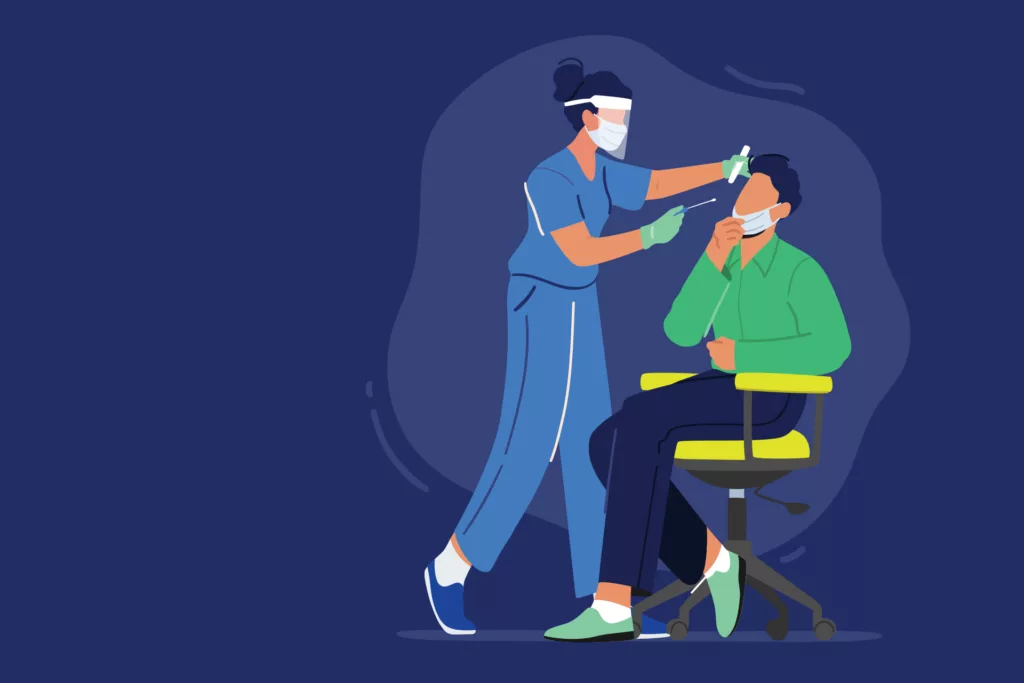Have you ever had that annoying gritty feeling, like there’s sand trapped in your eyes? That’s just a glimpse of what people with dry eye disease (DED) experience. Beyond the feeling of grittiness, they often battle with symptoms like redness, burning and itchiness. Over time, these pesky issues can really throw a wrench in day-to-day activities. Sure, getting older can be a culprit, but there’s a laundry list of other suspects too: from hormonal changes and over-wearing contact lenses to certain medications and health conditions. Even just being in a dry, low-humidity environment can cause a flare-up. Keep reading to learn about recent treatment advancements and tips that could provide significant relief.
Why it Happens
It’s not just about having enough tears; it’s about the quality of those tears. When our eyes feel parched or gritty, our body’s instinct is to ramp up tear production. Yet, simply having more tears isn’t always the solution. Our eyes have specialized glands dedicated to producing high-quality tears that form protective layers and clear away debris. When these glands don’t produce sufficient quality tears or can’t keep them from evaporating, that’s when DED takes hold.
Starting Your Journey to Relief
If you’re showing signs of dry eye, a simple first step is trying over-the-counter (OTC) artificial tears. Typically, a drop in each affected eye up to four times a day can bring improvement, which might be noticeable in a few days but can sometimes take up to a month for full effect. You have options: multidose bottles with preservatives or single-use, preservative-free droppers, which are ideal for those with sensitivities. These OTC solutions are usually wallet-friendly, costing just a few dollars per bottle.
However, if persistent dry eye symptoms are clouding your vision, it’s time to consult an ophthalmologist or optometrist. They’ll thoroughly evaluate your eyes, checking for underlying diseases or medication side effects. With their expertise, they can then recommend prescription treatments to tackle your DED symptoms.
Exploring Treatment Options and Their Costs
DED treatments come in various forms, each addressing eye irritation differently. The most suitable treatment often depends on individual patient needs, the physician’s recommendation and insurance coverage. One challenge with many DED medications is the need for frequent dosing, which can sometimes intensify eye irritation.
Introduced in 2003, cyclosporine (branded as Restasis) has been a reliable choice. It’s generally well-tolerated, though relief might take up to six months. A single-use emulsion or multi-dose bottle of Restasis comes at $646/month. A more recent version, Cequa, was launched in 2018, using nanomicellar technology to ensure better absorption and faster relief. It’s priced closely to Restasis at $559/month.
Xiidra (lifitegrast), approved in 2016, works differently than cyclosporine to decrease the inflammation that may be causing DED. Priced at $684/month, Xiidra has shown effectiveness for mild to severe DED. However, about a quarter of its users reported side effects like eye irritation and an unusual taste.
Introduced in 2021, Tyrvaya (varenicline) was approved as a nasal spray for DED, priced at $634/month. Interestingly, its active ingredient is also found in the tobacco cessation tablet, Chantix. When used nasally, it stimulates natural tear production, showing effectiveness as early as Day 28 in trials. Notably, some users reported sneezing and minor irritations in the throat and nose.
The newest addition, Miebo (perfluorohexyloctane), was approved in May 2023. It’s the first to combat tear evaporation directly, a concern for about 86% of DED sufferers. Unlike others which boost tear production, Miebo stabilizes the eye’s lipid layer to minimize evaporation. Priced at $771/month, it’s the priciest in its category. During trials, Miebo showed a significant reduction in patient-rated eye dryness by Day 15 and 57. Despite its unique approach, its efficacy seems comparable to other DED treatments. One notable downside is its need for four-time daily dosing.
On the Horizon
Vevye (cyclosporine) received FDA approval in May 2023 for DED treatment via the 505(b)(2) pathway. Vevye boasts an innovative water-free technology designed to enhance cyclosporine’s bioavailability. This medication is free of preservatives, oils and surfactants. Clinical trials reported irritation in just 8% of participants, a notable decrease from the 17% observed with traditional cyclosporine agents. By Day 29 of the study, up to 71% of patients showed significant improvement within a four-week span. While the exact pricing of Vevye is yet to be determined, it is anticipated to be in the ballpark of its predecessor, Restasis, estimated at around $646 for a month’s supply.
Improving Access Through Generics
The ophthalmic cyclosporine market has seen notable shifts recently. Generic versions of the Restasis single-use emulsion are now available at a monthly cost of $198, marking a $400 reduction compared to the branded Restasis. It’s important to highlight that only the single-dose generic of Restasis has been released. The Restasis multidose comes in a patented container that safeguards against contamination without needing a preservative. Generic competition for this version likely won’t emerge until around 2034. Since the beginning of 2022, three generics of the 0.05% single-use cyclosporine emulsion have been approved, offering patients more affordable and high-quality options for their DED treatments.
Nearly 30 million people in the U.S. suffer from dry eye disease, but only 1 million receive the necessary treatment. Historically, barriers such as limited approved treatments, prohibitive costs, frequent dosing needs and slow relief have deterred patients. However, recent advancements in the DED market continue to offer a range of treatment options in different mechanisms and formulations. The introduction of cost-effective generic versions of ophthalmic cyclosporine provides an affordable solution for those previously deterred by high prices. Despite its seemingly minor symptoms, DED significantly affects daily living. Our eyes are invaluable, and their care should never be compromised.






